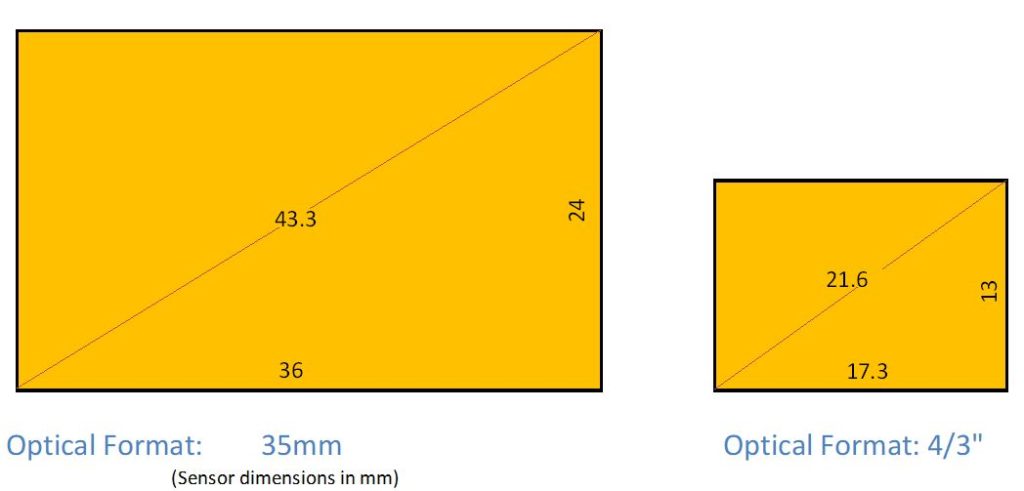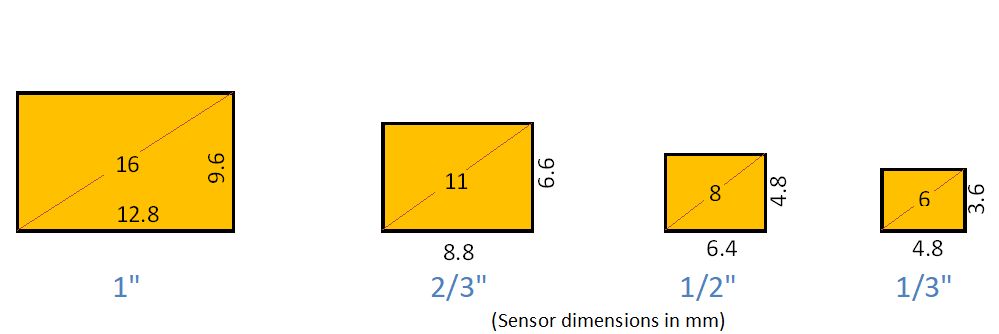Definitions: Focal Length and Field of View
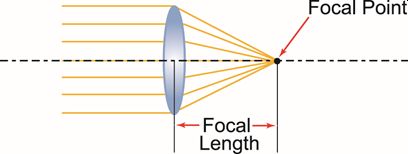
The Field of View (FOV) of a camera and lens is a measure of the spatial dimensions that the camera and lens can include in an acquired image. It is correctly specified in terms of the angle between the two edges of the camera image. In inspection applications, it is common practice to think of a dimensional FOV size – the width, height, or diagonal of the imaging field at a specific distance away from the camera.
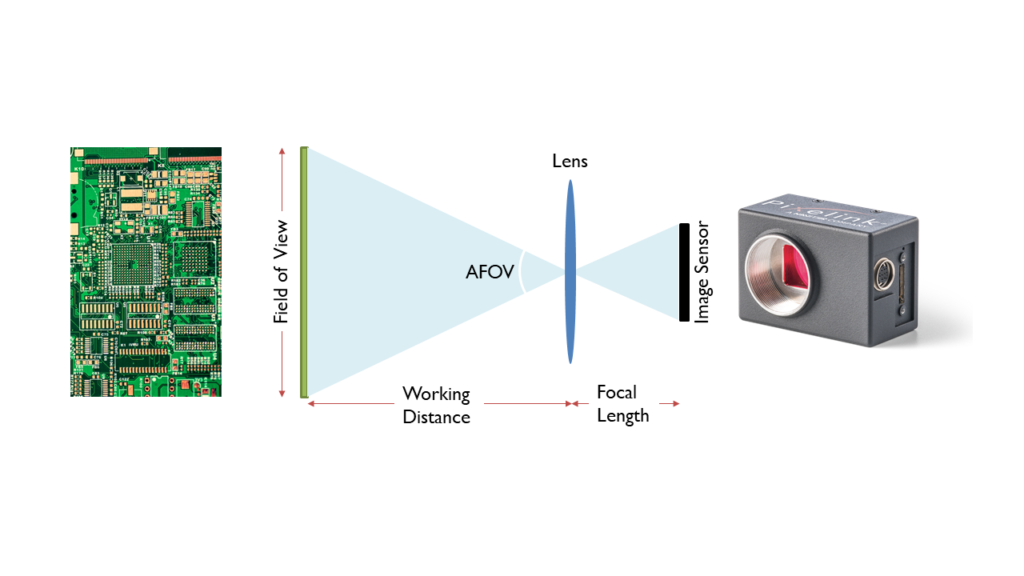
Camera lenses are Fixed Focal Length Lenses, which means that they have a fixed Angular Field of View (AFOV). By setting the focus-adjustment ring on a lens such that a focused image is formed at different working distances, differently sized FOVs can be obtained, since the viewing angle is held constant. AFOV is typically specified as the full angle (in degrees) associated with the horizontal, vertical or diagonal dimension of the sensor with the specified optical format.
Optical Format
Optical Formats are useful in matching lenses to cameras. The goal is to ensure that the circular output image of a lens (shown in light green in the sketch below) is large enough to fully circumscribe the rectangular format of an image sensor, just slightly overfilling the active imaging area.
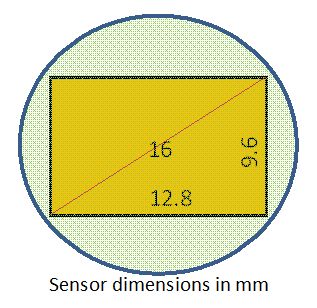
Since larger lenses are typically more expensive, one generally tries to find a lens that is an exact match to the Optical Format of the imager. In the case of an imager for which a matched format lens may not be readily available, it is acceptable to use a lens with an optical format that is slightly higher than that of of the imager. A lens with a larger optical format may be used with an image sensor of a smaller format, although the converse is not true. If the lens area underfills the image sensor area, the corners of the image rectangle may be darkened, as shown in the sketch below. This is an image artifact that is known as “vignetting”.
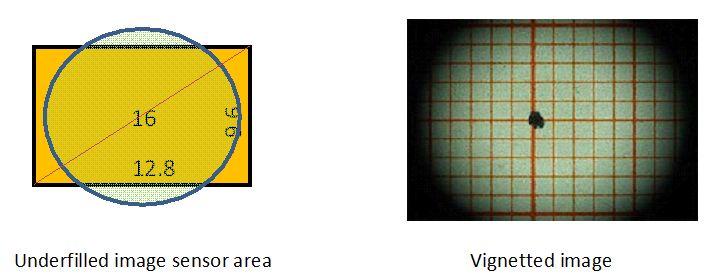
Even though Optical Formats are specified in inches, for example 4/3″ or 1″, it is best to think of Optical Formats as category names, and not as dimensions! Notice, for example that a 1″ Optical Format corresponds to an image with a nominal diameter of 16mm and not 25.4mm. This has to do with the history of TV cameras and lenses, dating back to the 1960s. In that era, cameras were based on long, cylindrical image-sensor tubes. A standard image-sensor tube with a 1″ diameter yoke had a circular image sensitive area with a 16mm diameter. Since it was expensive to manufacture distortion-free lenses of a larger size than absolutely necessary, lens manufacturers standardized on cost-effective designs described as 1″ format lenses that formed their images on a 16mm diameter circular image-sensitive area.
Although cylindrical image-sensor tubes have been replaced with rectangular image sensor chips, the naming conventions for the Optical Formats of camera lenses remain a legacy of TV history. 1” optical format lenses are associated with rectangular image sensor with 16mm diagonals; 2/3″ optical format lenses are associated with rectangular image sensor with 11mm diagonals; 1/2″ optical formats are associated with rectangular image sensor with 8mm diagonals, and so on.
Reading the Lens Specifications Table
The Lens Specifications Table offers a convenient way to select lenses, filtered by Optical Format and Focal Length. AFOV data is available for the “native” optical format of the lens and also, if available from the manufacturer, for smaller optical formats. Other useful data, such as Optical Resolution, physical dimensions, filter diameter & thread and estimated FOVs for Minimum WD are provided for the lenses.
The focal length of a lens defines the lens’s AFOV. For a given sensor size, the shorter the focal length, the wider the angular field of view of the lens. All else being the same, a lens with a longer focal length will reduce the FOV, producing an image that appears magnified when displayed. Additionally, the shorter the focal length of the lens, the shorter the distance needed to obtain the same FOV compared to a longer focal length lens.
The estimated performance of specific camera and lens combinations are shown on this page. Please contact us for assistance in finding the combination that best suits the requirements of your application.
Working Distance (WD) and Minimum WD
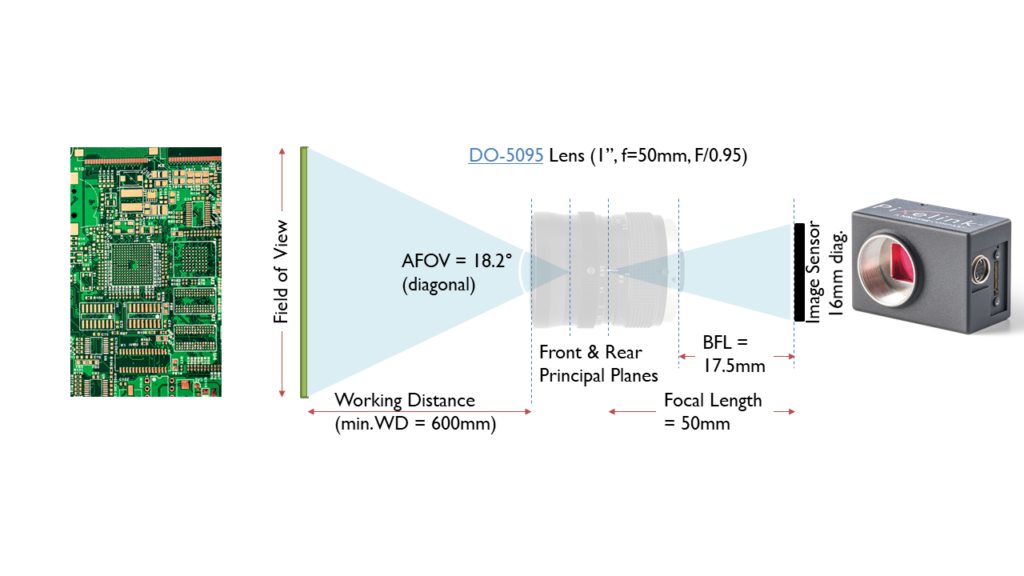
The Working Distance (WD) is specified as the distance from the sample to the front of the lens. Most camera lenses have a specified minimum working distance, which is the minimum distance (between the sample and the front of the lens) at which the lens is capable of forming a focused image.
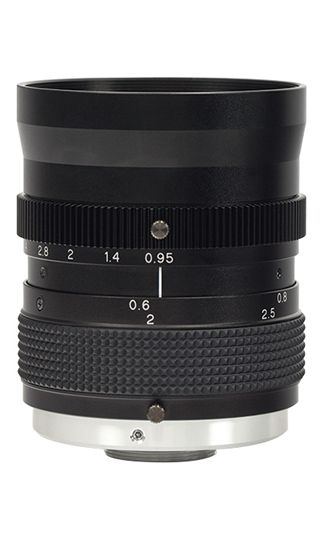
Minimum WDs for most lenses are in the range of 100mm~1000mm. As an example, the minimum WD for the DO-5095 lens shown above is specified to be 600mm. The text “0.6m” is stamped on the focus ring indicating that when the focus ring is rotated to this position, the lens is set to its minimum WD=600mm.
Optical Magnification
Since camera lenses have a fixed AFOV, the Horizontal and Vertical dimensions of the FOV increase with the Working Distance. This means that as WD increases, a larger H x V sample area is mapped onto the H x V dimensions of the image sensor . Magnification is defined as the “scaling factor” in this mapping process from the sample plane to the imager plane:
Optical Magnification = Sensor Dimension / FOV dimension {this applies to Horizontal, Vertical and Diagonal dimensions. One may also apply the reciprocal of this “scaling factor” when estimating, for example, how the pixel dimensions of the image sensor map to the corresponding dimensions in the sample plane}.

